
Illustrations from the Moss Haggadah
Article provided by Bet Alpha Editions, Berkeley, CA ©2012 by Bet Alpha Editions. All rights reserved
www.bet-alpha-editions.com
“When I handled it, I trembled because what I saw was, in my view, the greatest Haggadah ever produced.” Aumie Shapiro, London Jewish Chronicle
In 1980, Richard Levy, a collector of antique Judaica, sat in his Florida home with the artist, David Moss. Levy was familiar with Moss’s work, having followed his career for close to fifteen years. A bold idea was conceived at that meeting: as Moss had successfully revived the art of the illuminated Hebrew marriage contract, why not attempt the same for the handmade Passover Haggadah? The work envisioned was to be an entirely handwritten and hand-illuminated manuscript on real animal vellum, fairly large in format and traditional in style. Beyond that Moss had a completely free hand.
The project, originally envisioned to take a year, ended up consuming three years of Moss’s full-time efforts. Half that time was spent on research in libraries and museums on three continents. The research and execution of some of the pages required several months.
In October 1988, the most definitive exhibit on the Hebrew book ever assembled opened at the New York Public Library. Of the thirteen most important and beautiful Haggadah manuscripts shown, only one was created after 1717: the original Moss Haggadah.
In 1985, Neil and Sharon Norry saw a photographic copy of the Haggadah, and began pursuing the idea of publishing it. Moss agreed on the condition that the reproduction be faithful to the original in every respect - size, color, detail and special techniques. The owners of the manuscript generously consented to cooperate with the ambitious project, and Bet Alpha Editions was established to create a deluxe, limited edition facsimile of the Moss Haggadah that would be as indistinguishable from the original as human craftsmanship and modern technology could attain.
After an exhaustive search, the artist and publishers entrusted the production of the facsimile to what they consider to be the finest printing establishment in the world, the Stamperia Valdonega of Verona. (For background on this press, see the New Yorker ‘Profile’ of July 11, 1970 and the Encyclopedia Britannica article on G. Mardersteig.) The original manuscript was borrowed, and remained in Italy for over a year so that the separations could be made directly from its still unbound folios, and each page could be consulted and matched by the printer and artist at every stage.
The paper was made especially for the edition by the Cartiere Fedrigoni of Verona. The abundant gold leaf was reproduced by hot gold foil stamping, then the color printing was accomplished in up to thirteen colors to exactly match every shade of the original. The printing was done on a single color press with some of the sheets going through the press some twenty-five times. Between each pass, the sheets were returned to a special humidity and temperature-controlled chamber to assure absolutely perfect registration.
Since Moss did not originally intend for the manuscript to be reproduced, he made free use of many special techniques. For instance, the original contains lacy cutouts incised with a surgical scalpel. The delicacy of these cutouts made die-cutting impossible. Only one place in the world could be found to accurately reproduce the sharp edges and fragile connections of these pages. They were, therefore, printed and shipped to California where they were cut by precision laser, then returned to Italy to be bound with the other sheets. The facsimile volume was completed in Milan by the Legatoria Recalcati which bound each book in full leather and hand-applied the mirrors, tiny book, seal and hinged cup to each exemplar.
The sources, background and ideas which make up this Haggadah are as important to the work as its graphic treatment. Consequently, each facsimile is accompanied by a companion volume containing a detailed, page by page commentary written especially for the edition.
The production was completed, and A Song of David, the facsimile of the Moss Haggadah was published just before Passover of 1987. Printing experts consider the result to be technically among the finest books of its kind ever produced.
Rabbi Irving Greenberg, in his book, The Jewish Way, calls the Moss Haggadah: “A magnificent work of art, possibly the most beautiful Haggadah of all times…”
And Aumie Shapiro, reviewing the facsimile in the London Jewish Chronicle, said: “When I handled it, I trembled because what I saw was, in my view, the greatest Haggadah ever produced.”
Most of the 500 copies of the edition were sold within the first year of publication. They have been purchased for the rare book rooms of major libraries, museums and institutions such as Princeton, Yale, Duke, Harvard, and Stanford University libraries, the New York Public Library, the British Library, the Getty Museum, the Yeshivah University Museum, the Jewish Theological Seminary and Hebrew Union College libraries. Most copies, however, have been purchased by private individuals. Some families have acquired a copy for each of their children.
In November of 1987, the White House purchased a copy of the facsimile. President Reagan signed the Haggadah and presented it to President Chaim Herzog as the United States’ official gift on the occasion of the first state visit of an Israeli president to the U.S.
A set of the facsimile pages was left unbound so that the entire work could be displayed. This exhibit opened in 1987 at the Yeshivah University Museum in New York. It has since been shown at Temple Emanuel in San Francisco, The Widener Library at Harvard University, Temple Beth David, Miami and Temple Israel, Boston. The Library of Congress has also featured their copy of the facsimile in the exhibit, From the Ends of the Earth.
In 1989, a trade edition of the Haggadah was published by Bet Alpha Editions and recently a special Deluxe Edition in smaller format but with the original papercuts was also published by Bet Alpha in Berkeley, California.
Notecard reproductions have been published by the Metropolitan Museum of Art, New York City.
In 1992 Moss was awarded the Israel Museum’s Jeselsohn Prize for Contemporary Judaica for, among other work, his Haggadah.

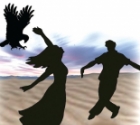 That Certain Smile
That Certain Smile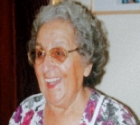 Fay Shelter 1919-2012
Fay Shelter 1919-2012 Doreen (Devorah) Goldberg 1924 – 2012
Doreen (Devorah) Goldberg 1924 – 2012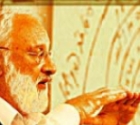 Kabbalah For All
Kabbalah For All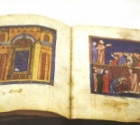 Haggadot
Haggadot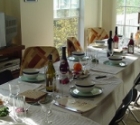 Passover 5767 ...The Holiday of Freedom
Passover 5767 ...The Holiday of Freedom